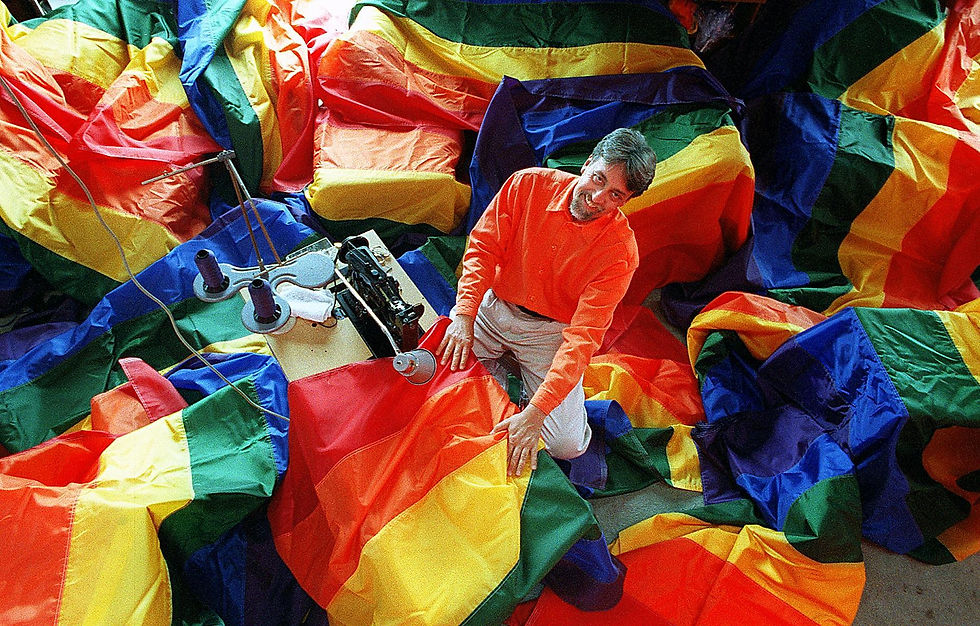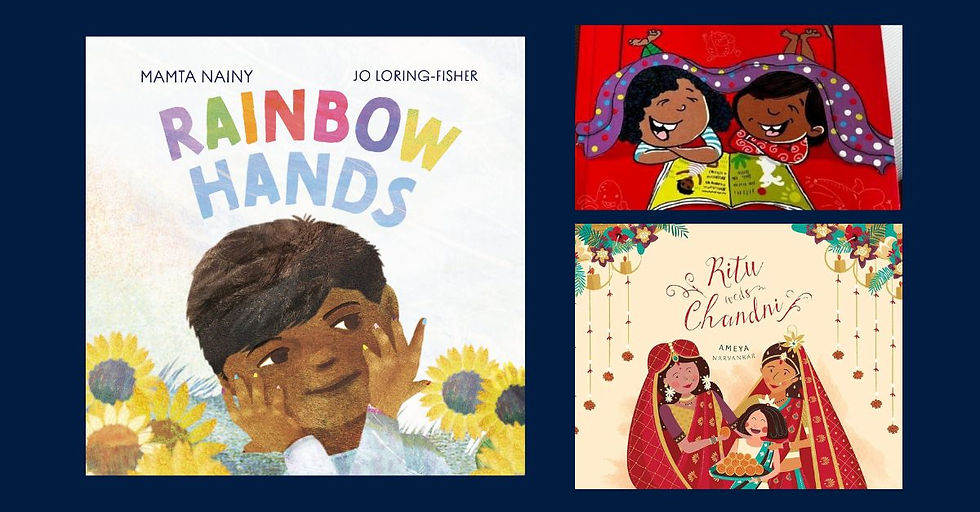Have You Heard of Queer Joy? Let Me Tell You What It Means
- Sonal Giani
- May 5
- 4 min read

I remember the first time I heard the phrase queer joy. It was such a simple combination of words, but something about it made me pause. It filled me with a kind of warmth I couldn’t quite explain—a feeling like a window opening, like sunlight spilling in.
Queer joy.
I turned the words over in my head. What did it mean, really? I knew what queer meant. I knew what joy meant. But put together, it felt like something bigger than just happiness. Something deeper. A kind of freedom.
And the more I thought about it, the more I realized: queer joy is the feeling of being fully yourself, without fear or shame. It’s the quiet relief of no longer having to hide. It’s the warmth of being seen and accepted—exactly as you are.
A friend of mine, who’s queer, once shared a story with me. For years, at work, he avoided mentioning his partner. Whenever colleagues talked about their families or their weekends, he’d change the subject or speak vaguely. “I just didn’t want it to be awkward,” he told me. “I didn’t want to be that guy.”
But last year, something shifted. He decided to bring his partner to the office holiday party. “I was so nervous,” he admitted. “But the moment we walked in, and people welcomed him without missing a beat, I felt something unlock inside me. I hadn’t realized how much I’d been hiding—until I didn’t have to anymore.”
That’s queer joy.
I’ve experienced that kind of joy myself. For most of my life, I was careful about how I moved—conscious of how I walked, how I held myself. I’d been teased growing up for my masculine gait, and somewhere along the way, I learned to monitor, to adjust, to control.
But at work, with a certain colleague, something shifted. It wasn’t that they asked me anything directly. It was that around them, I didn’t have to pretend. I didn’t feel the need to edit myself. I could just… be. I could walk how I walked, move how I moved, without thinking twice.
I remember telling them one day, almost as a passing reflection, how free I felt when I was with them—how I wasn’t controlling my gait, how I’d been teased all my life, but with them, I felt safe. Saying it aloud helped me see it clearly: I wasn’t holding myself back anymore. I wasn’t policing my own body.
And that freedom to simply exist, to not second-guess, allowed me to realize something even deeper. In a workplace where I was surrounded by openness, care, and acceptance—where my colleagues embraced me fully, without needing me to choose or explain—I saw I didn’t have to pick a side. I could be both feminine and masculine. I could be fluid. I could be me.
That, too, was queer joy.
Sometimes we think of joy as something extra—a nice bonus, an occasional treat. But for queer people, joy isn’t small. It’s everything. It’s the light that comes after so many moments of shadow. It’s the gift of belonging, after years of wondering if you ever would.
Another friend, after coming out as trans, told me about the first time he wore clothes that truly felt right for him. “I used to stare at myself in the mirror and feel like a stranger,” he said. “The first time I wore what I really wanted, I finally saw me. I can’t explain it. It was joy.”
And that joy wasn’t about fashion. It was about feeling at home in his own skin.
That’s why queer joy isn’t just about Pride parades or rainbow flags—though those have their place. It’s also about the quiet, everyday moments:
laughing with friends who understand you without explanation
holding hands in public without fear
finally using the name that feels true
finding a workplace where you don’t have to pretend
But here’s what I’ve learned: joy doesn’t happen in isolation. It grows in spaces where people are allowed to show up fully. It grows when the world around you makes room for it.
That’s why inclusion matters—not just in big statements or official policies, but in the everyday, small acts that send a message: you belong here.
I’ve seen workplaces where queer employees still feel they have to keep quiet, edit their stories, hide their families. And I’ve seen workplaces where they light up—where they’re promoted, celebrated, invited to the table. And the difference? It’s not just tolerance. It’s belonging.
For allies, supporting queer joy isn’t only about fighting discrimination—though that’s essential. It’s also about helping create spaces where people can let their guard down, breathe easier, and find joy without fear.
Sometimes it’s as simple as asking someone’s pronouns and respecting them. Sometimes it’s standing up when a joke crosses the line. Sometimes it’s celebrating a colleague’s wedding to their same-gender partner with the same excitement as anyone else’s.
Joy grows in those moments.
And when queer people can feel joy—not just survive, but thrive—everyone benefits. I’ve seen workplaces transform because someone felt safe enough to bring their whole self, and in doing so, brought new ideas, new energy, new leadership.
Queer joy doesn’t ignore the hard parts of being queer. It sits alongside them. It says: despite everything, we deserve happiness too. We deserve love, laughter, ease. We deserve to feel at home in our lives.
If you’re queer, I hope you claim every bit of that joy. If you’re an ally, I hope you help make more of it—by making room, by celebrating difference, by showing up.
Because in the end, joy isn’t a small thing. It’s what happens when we’re allowed to be fully, beautifully ourselves. And every step we take toward that kind of world is worth it.



Comments